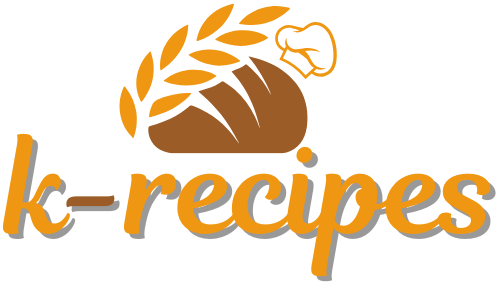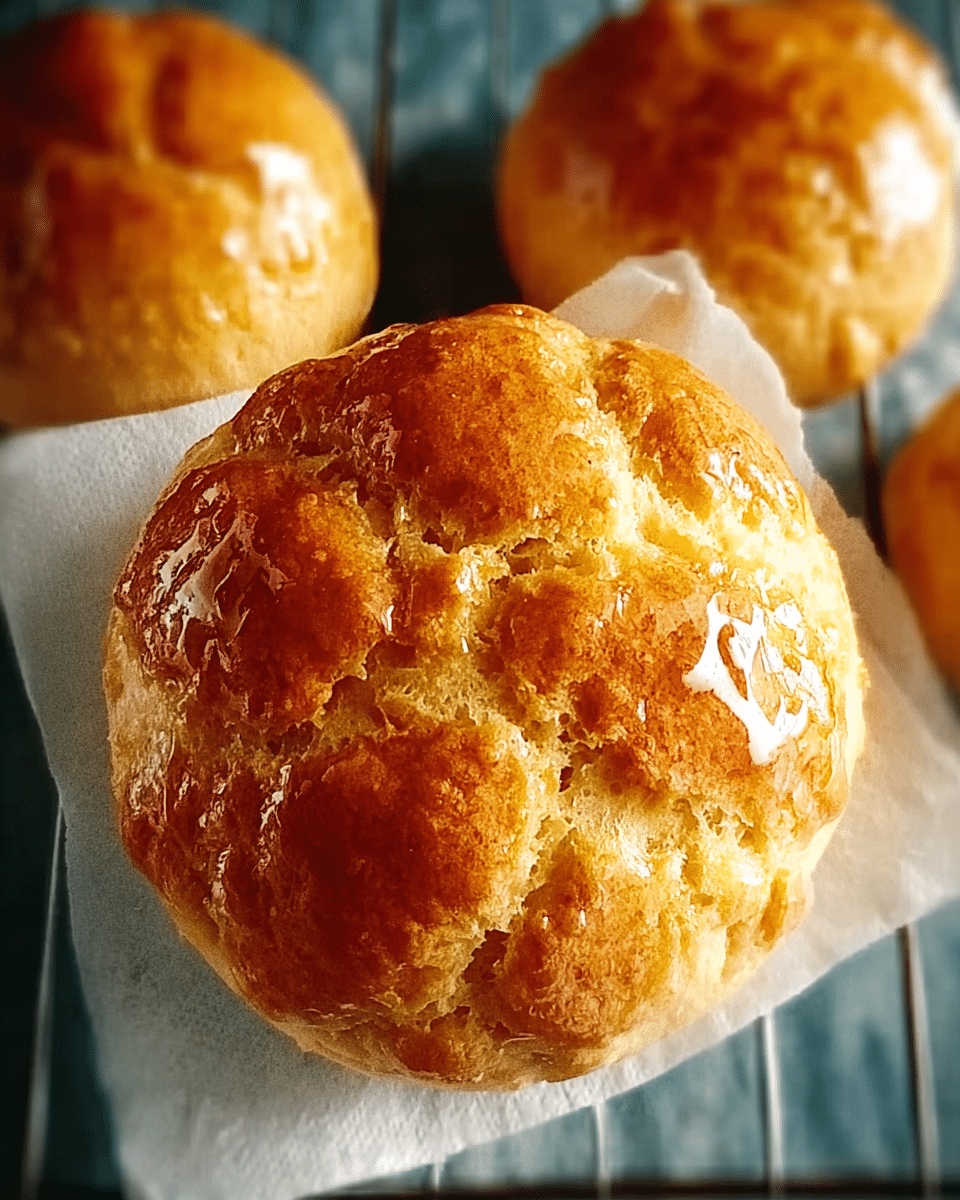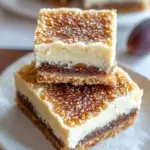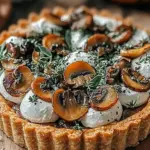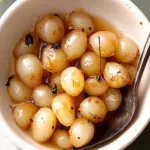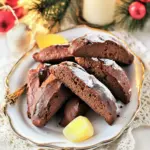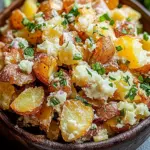A pineapple bun, known in Cantonese as bo lo bao (菠蘿包), is one of Hong Kong’s most iconic baked goods, instantly recognizable by its golden, crackled top that mimics the look of a pineapple’s skin. Despite its name, the bun contains no pineapple; instead, it’s the sugary cookie-like crust that gives the bread its distinctive appearance. What truly makes it irresistible is the contrast of textures: a soft, fluffy milk-bread base paired with a sweet, crumbly, slightly crunchy topping. Often enjoyed fresh out of the oven with a steaming cup of milk tea, pineapple buns have become a staple of Hong Kong bakeries, cafés, and breakfast tables.
The version here builds on the Tangzhong milk-bread method, which ensures an exceptionally tender crumb that stays moist and fresh longer than regular bread. The topping, adapted from traditional Hong Kong recipes, is simple yet transformative, giving you that crackled crust without requiring tricky ingredients like ammonia powder. Once baked, the buns are delicious on their own, but many locals elevate the experience by slipping a thick slab of cold salted butter inside, creating the legendary “bo lo yau.” Whether enjoyed as a breakfast treat, an afternoon snack, or even transformed into a sandwich, pineapple buns bring comfort, nostalgia, and a touch of bakery magic right into your kitchen.
Full Recipe:
Ingredients
Bread dough (Tangzhong milk-bread base)
-
4 tbsp salted butter, room-temperature (~57 g)
-
1 egg yolk (for topping)
-
½ cup granulated sugar (~100 g)
-
¾ cup all-purpose flour (~94 g)
-
2½ tbsp custard powder
-
¼ tsp baking powder
-
Optional extra butter (~1 tbsp / 14 g) if topping seems too dry
-
1 egg white (or yolk for stronger color), plus 1 tsp water for egg wash
Directions
-
Prepare the Tangzhong milk-bread dough and allow for first rise according to that recipe.
-
While the dough rises, cream the butter until pale and fluffy, then mix in the egg yolk.
-
In another bowl, whisk together sugar, flour, custard powder, and baking powder; add to butter blend on low speed until mixture resembles crumble and can hold together when pressed. If too dry, incorporate extra butter gradually until cohesive.
-
Shape the topping mixture into a log, wrap, and chill for at least an hour or overnight.
-
After bread dough has doubled, shape into eight buns, let rise again until puffy.
-
Slice chilled topping into eight pieces; flatten each between parchment or cling film to about 1/8″ thickness and drape over buns.
-
Brush with egg wash (egg white + water), bake at 350 °F (176 °C) for around 15–20 minutes, until golden and crackled.
-
Let cool briefly and serve warm, optionally with a slab of butter inside for the classic “bo lo yau” experience.
Nutrients
(Approximate values per bun based on similar milk-bread pineapple buns)
-
Calories: ~374 kcal
-
Carbohydrates: ~59 g
-
Protein: ~9 g
-
Fat: ~11 g
-
Saturated Fat: ~5 g
-
Cholesterol: ~65 mg
-
Sodium: ~365 mg
-
Potassium: ~133 mg
-
Fiber: ~1 g
-
Sugar: ~18 g
-
Vitamin A: ~315 IU
-
Calcium: ~62 mg
-
Iron: ~1.1 mg
Why This Recipe Stands Out
What makes this recipe exceptional is how it balances authenticity with approachability. The Tangzhong method ensures that the bread remains feather-light, pillowy, and stays soft for days—a quality that sets it apart from many homemade bread recipes that quickly turn dense. The topping, inspired by the best Hong Kong bakeries, is buttery, crumbly, and lightly sweet, cracking beautifully during baking to form that signature pineapple pattern. Unlike some traditional versions that rely on ammonia powder for texture, this recipe achieves the same effect through technique: chilling the dough, shaping carefully, and pressing the topping thin enough to crisp without overwhelming the bread beneath.
Perhaps most importantly, this recipe captures the cultural essence of Hong Kong baking. By adding the option to serve the buns with cold butter tucked inside, it embraces the beloved “bo lo yau” tradition. This small addition elevates the bun from a simple pastry to a truly indulgent experience—one that is equal parts nostalgic comfort food and bakery luxury.
The Benefits of the Ingredients
Every ingredient in this recipe contributes to texture, flavor, and overall success. The Tangzhong milk-bread base, made by pre-cooking a portion of the flour with water, creates a gelatinized mixture that allows the dough to hold more moisture. This is why the bread stays fresh and fluffy for days, unlike ordinary loaves that dry out quickly. Salted butter in the topping provides richness while balancing sweetness, and its creamy texture helps the topping spread evenly over the buns as they bake.
Custard powder is another important component, subtly enhancing both flavor and color. Though used in small amounts, it adds a mild vanilla-like note and a delicate yellow hue, making the topping look more inviting. Egg yolks bring richness and help bind the topping, while the egg wash ensures a shiny, golden finish. Even small details—like chilling the topping before use—matter because they allow the crust to bake into a crackled shell rather than melting prematurely. Each ingredient has a purpose, and together they create a bun that is greater than the sum of its parts.
Cooking Tips
For best results, precision matters. Weighing flour rather than scooping ensures accuracy and avoids a dense or dry topping. When making the topping, pay attention to consistency: it should press together like cookie dough but not crumble apart. If it feels too dry, add butter a little at a time until it holds. Chilling is equally important; at least an hour is recommended, but overnight is ideal because it firms the topping for easier handling and guarantees a crisp crackle when baked.
When shaping the topping, roll it thin—around 1/8 of an inch. A topping that’s too thick won’t crack attractively and may overpower the bread. As the buns bake, keep an eye on them; rotating the tray halfway ensures even browning. And if you find yourself with day-old buns, don’t worry. A few minutes in a toaster oven revives their texture beautifully, bringing back the crunch on top while warming the soft center.
Serving Suggestions
Traditionally, pineapple buns are served fresh from the oven, often with a slice of cold salted butter tucked inside to create the famous “bo lo yau.” This combination of warm bread and chilled butter makes every bite rich, creamy, and slightly salty against the sweet crust—a sensory experience beloved across Hong Kong. For an authentic pairing, enjoy your bun with a cup of strong Hong Kong-style milk tea or coffee.
Beyond tradition, pineapple buns are versatile. They can be adapted into savory sandwiches by splitting them and adding char siu pork, fried chicken, or even a breakfast filling of Spam, egg, and cheese—a modern twist embraced by Hong Kong cafés. For variation, consider making smaller, bite-sized buns for parties or filling them with custard, red bean paste, or coconut for extra flavor. These variations keep the essence of the pineapple bun intact while offering new ways to enjoy it.
Conclusion
This pineapple bun recipe is more than just bread—it’s a celebration of tradition, texture, and flavor. By combining the Tangzhong method with a carefully crafted topping, it delivers softness, longevity, and the iconic crackled crust that defines the pastry. From the moment you bite into the crisp shell and sink into the fluffy interior, you’ll understand why this bun holds such a cherished place in Hong Kong’s food culture.
Whether enjoyed plain, stuffed with butter, or transformed into creative sandwiches, these buns bring comfort and joy to any table. They’re perfect for breakfast, a midday snack, or a stylish addition to an afternoon tea spread. Once you master the rhythm of preparing the dough, chilling the topping, and baking to golden perfection, this recipe will become a household favorite. At its heart, the pineapple bun proves how simple ingredients—flour, butter, sugar, eggs—can come together to create something extraordinary, timeless, and utterly delightful.
